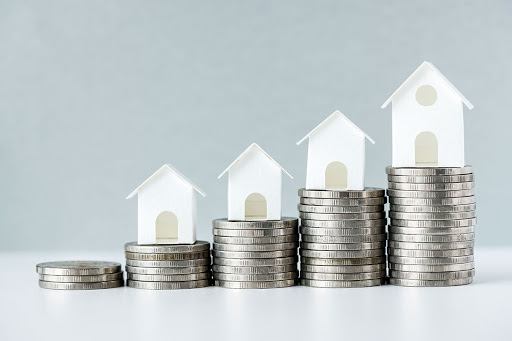The last time you looked up product reviews, which ones did you notice first, 5-star, or 1-star? Also, how many 5-star reviews does it take to offset a 1-star review? Probably more than one. Today, I’m talking about why that is, and it comes down to two words that describe our instinctive behavior: Negativity Bias.
We discussed Negativity Bias on a recent podcast. The short version of explaining Negativity Bias is that we find negative information to be more compelling, important, and influential than we do positive data. It’s why we notice the 1-star review before the 5-star. It’s also why we scroll through the reviews looking for a bad review if all the reviews are glowing.
If we were using rational thinking about the two reviews, one 5-star and the other 1-star, we could make a case that one person had a terrific experience, and one person had a terrible experience. Then, the average of those two reviews should balance to the middle, 3-stars. However, we don’t. Whenever I am shopping for something on Amazon and the product has even a three-and-a-half star rating, I don’t buy it. It must be four- or five- stars for me to buy it.

Negativity Bias exists because we worry about what could go wrong instead of what could go right. Therefore, we focus on negative information. We do it in the news, too. Most of the stories, particularly now during the pandemic, are bad. It’s easy to blame the people who put together the news media for highlighting the negative, but, in reality, they are only giving us what we want.
However, even when things are going pretty well, we still have a negative bias. It’s a top-to-bottom bias. We’re looking for the negative stuff. If we get both positive and negative information, we pay more attention to the negative than the positive, like it’s weighted more heavily. Moreover, we’ll remember the negative information more than the positive.
From an evolutionary psychological perspective, which is about the survival of the species, it makes sense. If you only look for the happy things all the time, then you might be happy but then get eaten by a saber-toothed tiger.
From a leadership and Customer Experience perspective, with nary a saber-toothed tiger in sight, we still think it makes sense. You might see Negativity Bias manifest in your looking for bad news when given many stats to review as a result. I am guilty of this, also. Last year, we doubled the number of downloads for our Podcast, The Intuitive Customer, and I didn’t think it was that good; I wanted them tripled!
Leaders should recognize that looking for the negative is what they are doing in cases like my dissatisfaction with the podcast numbers. Too many of us do not say thank you to the teams for a job well done, even though we know that gratitude and attention has a massive effect on people’s motivation and productivity.
THE INEVITABLE AVERAGE PERFORMANCE
Nobel-Prize winning economist Professor Daniel Kahneman, the author of Thinking Fast and Slow, was hired once by the Israeli Air Force to review their pilot-training programs. Professor Kahneman noticed that the Air Force trainers would always give pilots negative feedback about anything they made a mistake on, no matter how small. Moreover, if the pilot landed the plane perfectly, trainers didn’t praise the pilots and instead treated their performance as expected. When Professor Kahneman asked about it, the Israeli Air Force said they do it because that works. If the trainer yells at the pilots, the pilots fix it next time. But if the trainer praises the pilot for a job well done, the pilot gets it wrong the next time.

These trainers were observing Regression to the Mean, which means that data that is on an extreme from the average, either positive or negative, then the data will be closer to the mean if measured a second time. Essentially, Regression to the Mean tells us that it doesn’t matter what the trainer says; pilots were going to average-out in performance anyway. However, our Negativity Bias makes it feel like we’re doing good by focusing on the bad. The reality is we’re not; we only make people miserable in the process of getting the outcome that statistics say would happen anyway.
One could argue that negativity bias is adaptive, that there are good things that a negative bias can do for us. After all, no one ever accomplished a great thing by relying on complacency. On the other hand, there is something perverse about never being happy with objective successes either.
Negativity Bias is related to Loss Aversion. A focus on the negative is a focus on the loss. There will be times when Negativity Bias will lead to less rational, sound decision-making. In those cases, we should eliminate it. However, there are areas where Negativity Bias could be motivational for us or lead to improvements. Those are areas where we might be willing to tolerate more negativity bias.
Insurance companies are successful because of the Negativity Bias. We worry about losing something (i.e., Loss Aversion), so we look at things from a negative perspective. The solution is to insure yourself against the loss. In addition to providing a solution to the effects of Negativity Bias, the insurance industry also shows that there is money to be made by people thinking negatively.

We exhibit Negativity Bias in other customer situations also. If I’m looking at things from a what-could-go-wrong standpoint, I want to take actions that will make me feel more confident about a purchase. Those actions could be reading a review, talking to friends, or buying only from brands that I trust (because I feel confident that the outcome will be okay). All of these actions are part of an overall risk-mitigation strategy.
SO, WHAT SHOULD YOU DO (AND NOT DO) WITH THIS BIAS?
The danger of Negativity Bias is it skews your view of the world, and you might miss the good stuff. For example, despite being amid a global pandemic, things are better than they have ever been over the last 50 to 100 years. Global poverty is down a lot; some types of pollution have decreased, especially in some regions of the world; there have been improvements in infant mortality rates, starvation levels, and world income increases. It’s easy for these facts to get lost in the mix because we’re so focused on the negative.
So, we can use Negativity Bias to get positive results, but we should be careful not to skew the world view by going too far with it. If we think that our team is doing everything wrong or that our company is failing, we will make bad decisions. It would help if you had an accurate picture of what’s going on in reality.

When it comes to practical applications of Negativity Bias in Customer Experience, we would recommend the following:
- Do periodic checks to ensure any negative assessments you have are based on reality and not bias. If your negativity bias leads you to want to improve things, it could potentially be positive because you focus on what’s not going as well as it could. On the other hand, if your negativity bias leads to inaccurate assessments about the world’s state, that’s not going to help or lead to better decisions. When you find yourself thinking negative thoughts about life, business, or Customer Experience, pause and do a check to see if you can substantiate that with objective measures. Sometimes things are genuinely terrible, but make sure that that’s reality and not just your perception.
- Recognize the fact that you and your customers naturally look at things from a negative perspective. It would be best to try to counteract that. You attract more flies with honey than you do with vinegar, so praising people in your team is essential, particularly in these times.
- Provide customers with solutions to help them. I’m convinced that people will look back and recognize who helped them through these difficult times. That’s a way of building customer loyalty. So, look for ways to solve customers’ problems and help them through this difficult time.
- Think about framing what you say to customers in a positive way. Knowing that customers will receive messages from a negative perspective, avoid communicating in an off-putting way because that will increase the pessimistic atmosphere. Whether in an email, chat, or phone call or your advertising messaging, be deliberate about how you positively frame things to counteract customers’ natural bias. Moreover, you might need an outside perspective to show you how you are framing your messages. We have an Experience Health Check; where we act as if we were a customer in your digital and physical experiences, analyze your current experience against the best practices in business, and come back to you with recommendations.
- Don’t forget the upside that can exist in your business. Businesses focus a lot on the things that are going wrong. However, through our Emotional Signature Research®, we discover that there often more significant opportunities that would lead to more considerable gains than the areas on which the company focuses because of losses. Moreover, these differences show that the opportunity is sometimes even two or three times more valuable than dealing with negative things.
It’s easy to slip into Negativity Bias. Despite its name, Negativity Bias isn’t all bad. It can drive us to try harder and raise the bar for performance, which leads to outstanding results sometimes. However, if we let it cloud our judgment and crowd out our successes, then it has gone too far. Like many of the concepts of the behavioral sciences, Negativity Bias requires understanding and balance, so you can reap the benefits without cutting down your successes in one fell swoop.






